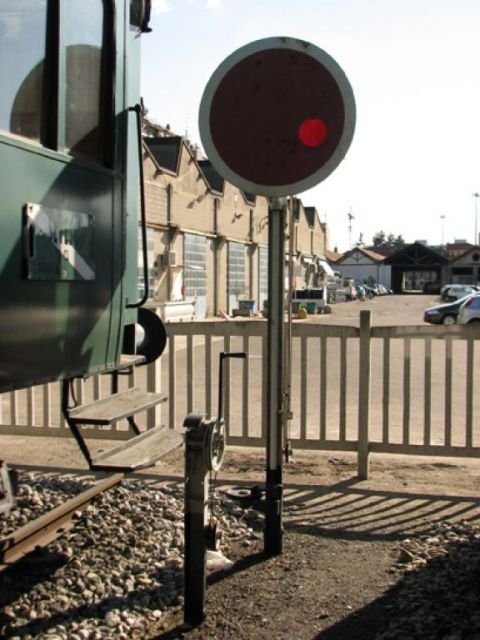MANUALLY CONTROLLED SEMAPHORE DISC SIGNAL, F.S. TYPE

-
Item owner - FNM
-
Category - FNM Collection
-
Inventory - 1699
-
Author - I.V.E.M.
-
Dimensions - height 4m; disc diameter m
-
Dating - 1930-1950
A large metal disc is hinged on a vertical drawn metal rod anchored in the ground; fixed to a vertical shaft, the disc can rotate on its own axis, showing an advancing train its entire face, or, when rotated 90°, its profile. A round hole in the disc contained a piece of red glass, and two vanes are welded perpendicularly to its face, completely opposite, with a round hole containing a green piece of glass. The side of the disc facing the train is red with a white edge. A little shelf slides vertically along the rod, with a metal wire and two pulleys, to position an oil lamp behind the red or green opening, depending how the disc is turned. The vertical shaft integral with the disc can be turned by a series of gears and wire pulleys controlled by a member of station staff.
The signal shows the incoming train a red stop signal or a green go signal.
It is installed before a station. In its normal position, the signal is red when the way is barred, with the disc showing its red side to the line and the red window lit up. If the train is to enter the station, the stationmaster turns a hand-crank connected via the
metal wire to the signal shaft, turning it 90°. In the stop position, the green window is before the lamp, which lights it up, so that the signal appears green and the train can advance into the station. In this position only the profile of the disc is visible, and the green windows of the vanes are turned toward the train.